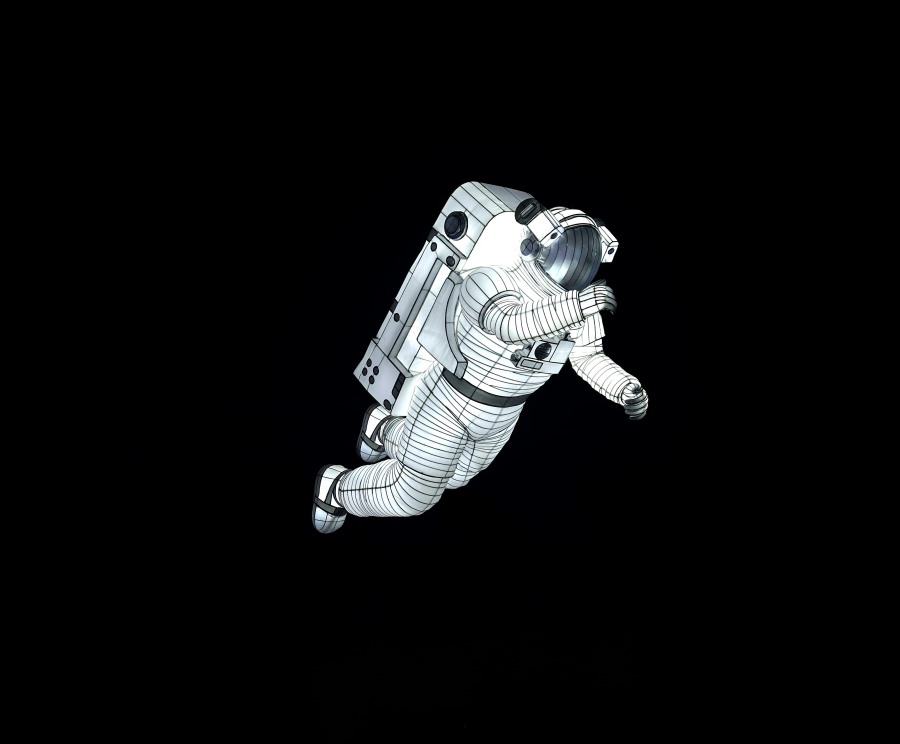7 Crore+ Customers

Affordable Premium

7 Crore+ Customers

Affordable Premium



The process of knowing the unknowns is literally rocket science. We are talking about space exploration here. Humans started exploring beyond the Earth’s atmosphere in 1961 when the Soviet Union sent the first person to travel into space.
Since then, countries globally have launched numerous space missions, playing a significant role in driving innovations, understanding the environment and improving economic development, all of which ultimately benefit humanity.
Now, let’s dive into the meaning of space exploration, alternatively known as space travel, cosmic exploration, or space research.


In simple terms, space exploration is the scientific study of outer space. Using advancing space technology such as telescopes, satellites, spaceships, and robots, a manned or unmanned space mission is conducted to discover and investigate the known and unknowns about cosmic bodies.
As you have gained clarity into the meaning of space exploration, let’s now understand why exploring space is important and how it started.
The ultimate importance of space exploration lies in the survival of living beings and planet Earth.
Space exploration helps us understand what exists beyond our planet’s atmosphere, gain knowledge about the solar system, push the boundaries of scientific research, discover new resources and invent advanced technologies for the improvement of our daily lives.
A constant study of space also helps detect potential extraterrestrial threats and develop ways to prevent or deflect them.
Space exploration began in the 1950s, during the Cold War, when the United States and the Soviet Union competed to develop rockets that could carry nuclear weapons. The same rockets could also launch artificial satellites into orbit around Earth, which marked the beginning of the space race.
The first artificial satellite was Sputnik 1, launched by the Soviet Union on October 4, 1957, which sent out radio signals that could be heard around the world. Sputnik 2 followed, carrying the first living being in space, a dog named Laika.
The space race climaxed with the U.S. achieving the first manned Moon landing in 1969, marking the Apollo 11 mission led by Neil Armstrong and Buzz Aldrin. Post-moon exploration included space stations (Salyut, Mir, Skylab), the space shuttle, and joint missions like Apollo-Soyuz and Shuttle-Mir.
The International Space Station (ISS), a multinational effort, began in 1998, serving as a continuous habitat for scientific experiments. Beyond human spaceflight, unmanned probes explored the solar system, with notable missions like Voyager, Cassini-Huygens, and Curiosity on Mars.
Space Exploration can be categorised into six types that include:
According to NASA, space exploration delivers direct and indirect benefits.
Space exploration benefits and drawbacks come hand in hand. Here’s how exploring the space can be disadvantageous:
Explore the list of significant milestones in space exploration to date (1)
| Date | Event | Spacecraft | Countries |
| Oct. 4, 1957 | The first artificial Earth satellite | Sputnik 1 | U.S.S.R. |
| Nov. 3, 1957 | Laika, the first animal launched into space | Sputnik 2 | U.S.S.R. |
| Sept. 14, 1959 | The first spacecraft to hard land on the Moon | Luna 2 | U.S.S.R. |
| Oct. 7, 1959 | The first pictures of the far side of the Moon | Luna 3 | U.S.S.R. |
| April 1, 1960 | The first applications satellite launched | TIROS 1 (weather observation) | U.S. |
| Aug. 11, 1960 | The first recovery of a payload from Earth orbit | Discoverer 13 (part of the Corona reconnaissance satellite program) | U.S. |
| April 12, 1961 | Yuri Gagarin - the first human to orbit Earth | Vostok 1 | U.S.S.R. |
| Dec. 14, 1962 | The first data returned from another planet | Mariner 2 | U.S. |
| June 16, 1963 | Valentina Tereshkova - The first woman in space | Vostok 6 | U.S.S.R. |
| July 26, 1963 | The first satellite to operate in geostationary orbit | Syncom 2 (telecommunications satellite) | U.S. |
| March 18, 1965 | Human’s first spacewalk, by Soviet cosmonaut Aleksey Leonov | Voskhod 2 | U.S.S.R. |
| July 14, 1965 | The first spacecraft pictures of Mars | Mariner 4 | U.S. |
| Feb. 3, 1966 | The first spacecraft to soft-land on the Moon | Luna 9 | U.S.S.R. |
| April 24, 1967 | Vladimir Komarov - the first death during a space mission | Soyuz 1 | U.S.S.R. |
| Dec. 24, 1968 | Frank Borman, James Lovell, and William Anders – the first humans to orbit the Moon | Apollo 8 | U.S. |
| July 20, 1969 | Neil Armstrong – the first human to walk on the Moon | Apollo 11 | U.S. |
| Sept. 24, 1970 | The first return of lunar samples by an unmanned spacecraft | Luna 16 | U.S.S.R. |
| Dec. 15, 1970 | The first soft landing on another planet (Venus) | Venera 7 | U.S.S.R. |
| April 19, 1971 | The first space station launched | Salyut 1 | U.S.S.R. |
| Nov. 13, 1971 | The first spacecraft to orbit another planet (Mars) | Mariner 9 | U.S. |
| Dec. 2, 1971 | The first spacecraft to soft-land on Mars | Mars 3 | U.S.S.R. |
| Dec. 3, 1973 | The first spacecraft to fly by Jupiter | Pioneer 10 | U.S. |
| July 17, 1975 | The first international docking in space | Apollo and Soyuz spacecraft during the Apollo-Soyuz Test Project | U.S., U.S.S.R. |
| July 20, 1976 | The first pictures transmitted from the surface of Mars | Viking 1 | U.S. |
| Sept. 1, 1979 | first spacecraft to fly by Saturn | Pioneer 11 | U.S. |
| April 12–14, 1981 | The first reusable spacecraft launched and returned from space | space shuttle Columbia | U.S. |
| Jan. 24, 1986 | The first spacecraft to fly by Uranus | Voyager 2 | U.S. |
| March 13, 1986 | The first spacecraft to make a close flyby of a comet nucleus | Giotto at Halley's Comet | European Space Agency |
| Aug. 24, 1989 | The first spacecraft to fly by Neptune | Voyager 2 | U.S. |
| April 25, 1990 | The first large optical space telescope was launched | Hubble Space Telescope | U.S., European Space Agency |
| Dec. 7, 1995 | The first spacecraft to orbit Jupiter | Galileo | U.S. |
| Nov. 2, 2000 | The first resident crew to occupy the International Space Station | William Shepherd, Yury Gidzenko, and Sergey Krikalyov | U.S., Russia |
| Feb. 14, 2000; Feb. 12, 2001 |
The first spacecraft to orbit (2000) and land on (2001) an asteroid | NEAR at the asteroid Eros | U.S. |
| June 21, 2004 | The first privately funded manned spacecraft to achieve suborbital flight above 100 km (62 miles) | Mike Melvill on SpaceShipOne | Mojave Aerospace Ventures (commercial joint venture) |
| July 1, 2004 | The first spacecraft to orbit Saturn | Cassini-Huygens | U.S., European Space Agency, Italy |
| Jan. 14, 2005 | The first spacecraft to land on the moon of a planet other than Earth (Saturn's moon Titan) | Huygens probe of the Cassini-Huygens spacecraft | U.S., European Space Agency, Italy |
| June 13, 2010 | The first spacecraft to return to Earth with samples from an asteroid | Hayabusa | Japan |
| March 17, 2011 | The first spacecraft to orbit Mercury | Messenger | U.S. |
| August 6, 2014 | The first spacecraft to orbit a comet | Rosetta | European Space Agency |
| November 12, 2014 | The first spacecraft to land on a comet | Philae | European Space Agency |
| March 6, 2015 | The first spacecraft to orbit a dwarf planet (Ceres) | Dawn | U.S. |
| July 14, 2015 | The first spacecraft to fly by Pluto | New Horizons | U.S. |
| December 21, 2015 | The first rocket stage to return to its launch site | Falcon 9 | U.S. |
| January 1, 2019 | The farthest object (2014 MU69) explored by a spacecraft | New Horizons | U.S. |
| January 3, 2019 | The first landing on the Moon's far side | Chang'e 4 | China |
| August 23, 2023 | The first landing of spacecraft on the Moon’s South Pole | Chandrayaan-3 | India |
Space exploration has advanced human knowledge, technology, and culture in many ways. It has inspired generations of scientists, engineers, artists, and dreamers to pursue their passions and curiosity. It aids the human desire of exploring the unknown and expands the horizons of humanity.